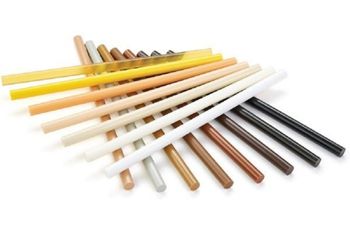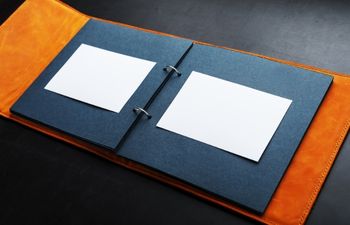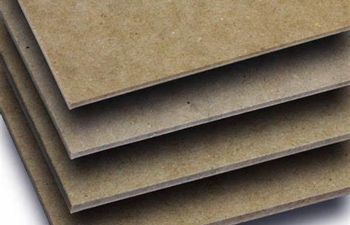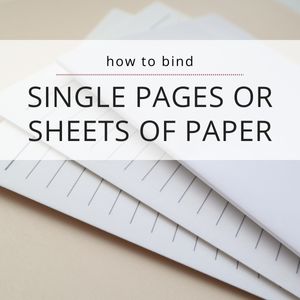Hot glue is popular among craft enthusiasts, so it’s a question I’ve heard before – “Can I use hot glue sticks to make books?” The short answer is yes – absolutely – but there are a few things to pay attention to first. I’ll explain why in this post and share a few tips and products to try if you’re looking for a great hot glue option for bookbinding.
Pros & Cons of using hot glue in bookbinding
While hot glue is not conventional in bookbinding, there are some benefits to using it:
- dispenses quickly
- dries clear
- strong hold
- allows for precision
- no paste brushes required
- available in solid form
- easy to store
Disadvantages of hot glue in bookbinding
As with anything, there can be some drawbacks to pay attention to:
- difficult to find in archival quality (acid-free, pH neutral)
- dries quickly, leaving very little room to position
- takes practice to dispense evenly
- usually dispensed in thin lines, making it hard to use in medium to high coverage areas
- may be too hot for some materials
- does not remain flexible
- requires a specific tool to dispense
As you can see, hot glue is pretty 50/50 on the good and bad, which is why I can’t knock it for anyone who wants to try. If you’re going to give hot glue a shot, let me share the most important thing you should pay attention to: drying time.
Use with caution
One of the top concerns about hot glue in bookbinding (in particular) is how it is dispensed. Most hot glue tools have a small nozzle through which the glue passes, creating a thin line of product. This is great for small or high precision jobs (like jewelry making), but not for bookbinding. That’s because those thin lines tend to harden quickly – leaving very little room to smooth the glue under certain materials (paper, fabric, some book cloths, etc.) – which could lead to a bumpy, uneven appearance.
If you are less experienced but very curious about hot glue, try it out on book material samples first (leftover book cloth, marbled or handmade papers, leather, etc.) and see how it reacts.
Best hot glue for bookbinding
I don’t want to knock hot glue at all, because it’s used commercially to produce books all the time. The big difference here is a machine verses humans – which one do you think will spread the glue better? To help us perform just as well, we need a tool with a very different nozzle.
In all my years bookbinding, I’ve only found one retailer who sells hot glue specifically for bookbinding purposes. The company, called Hot Melt, offers an entire kit complete with acid-free glue sticks and a dispensing tool that features a wide nozzle. It’s absolutely the best setup if for anyone who would like to use hot glue in their books.

The company also offers two options for their hot glue kits – sticks or pellets – and two tools. One tool is more for casual bookbinders and only takes hot glue sticks while the other makes sense for binderies that produce lots of books each week. The bulk production tool for binderies only takes the dry pellets.
Check them both out in the resources section below and decide for yourself which would make the most sense for your needs.
Resources
Hot Melt Kit for Individual Binders – $110, includes glue sticks, heat tool and special nozzle
Hot Melt Kit for Binderies – $785, includes glue pellets, heat tool and special nozzle
If you’d like to learn more about bookbinding glue options, check out Know the Difference | Bookbinding Glue, which includes a great rundown of various bookbinding adhesives and their uses.
Are you new to bookbinding? I’ve included some great getting started resources in my New Bookbinder Guide, so be sure to check it out.
So, what do you think? Would you ever use hot glue for your books? Pop over to Instagram or Facebook and share your thoughts with me!
ALL my best,
Misty






